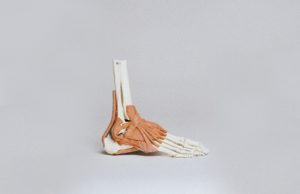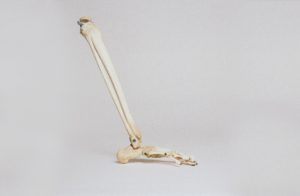Regenerative medicine helps those suffering from injuries who may not respond well to rest, physical therapy, or other non-surgical treatments. It is a leading treatment method for treating sports-related injuries, and comes in many shapes and sizes. This article covers the fundamentals of regenerative medicine, the various treatments, and the answers to the most common questions from patients.
What is Regenerative Medicine?
 Regenerative medicine is a broad category which spans across several treatments. These treatments include stem cell therapy, PRP (platelet-rich plasma), Prolotherapy, and cartilage regeneration.
Regenerative medicine is a broad category which spans across several treatments. These treatments include stem cell therapy, PRP (platelet-rich plasma), Prolotherapy, and cartilage regeneration.
Regenerative medicine is defined by the National Institutes of Health (NIH) as the “process of creating living functional tissues that repair or replace tissue or organ function lost to age, disease, damage, or congenital defects”. The goal is to restore damaged tissue that won’t heal on its own.
There are three categories of Regenerative Medicine:
- Cellular therapy
- Tissue engineering
- Treatments encouraging natural healing (such as Prolotherapy)
Cellular Therapy
These therapies expedite healing by injecting live cells into the bloodstream. PRP and stem cell therapies are two examples of cellular therapy. These therapies can help treat tendinopathy (disease of a tendon) and other sports-related injuries.
 Tissue Engineering
Tissue Engineering
This type of therapy replaces and repairs damaged tissues with natural or manmade tissue. It is also possible to use a combination of both. This engineering of tissue often helps treat cartilage injuries.
Treatments Encouraging Natural Healing
Treatments such as these therapies that promote the body’s natural ability to heal tissues without new cells or tissue regeneration.
4 Regenerative Medicine Treatments
Most regenerative medicine treatments are outpatient. However, more than one session may need to occur before any results can be felt or seen.
Stem Cell Treatment
A stem cell has the potential to develop into a cell that serves a specific function, such as cartilage or tendon cells. Some doctors believe that stem cells have the ability to meet a certain need. In the case of injury, this need would be healing the injury in question.
Stem cells retracted from amniotic fluid or placenta are usually not strong enough for transport and die. This fragility makes these types of stem cells largely unviable for regenerative medicine. For this reason, stem cells are usually taken from a patient’s fat, blood, or bone marrow.
Platelet Rich Plasma (PRP)
 The PRP substance is injected directly into the injured area, making it an attractive alternative to surgery or other invasive treatments.
The PRP substance is injected directly into the injured area, making it an attractive alternative to surgery or other invasive treatments.
PRP gained popularity in sports medicine in the early 2000s. Hines Ward, a wide receiver for the Pittsburgh Steelers, received PRP treatment for a sprained ligament in his right knee. It is widely thought that Ward undergoing PRP treatment was largely the reason that he was able to help the Steelers win the Super Bowl that year.
Since then, many famous athletes have followed Ward’s example.
Prolotherapy
Prolotherapy treatment seems rather counter-intuitive. During the treatment, the doctor will inject an irritant- dextrose being the most common irritant used- which produces further inflammation in the injured area. Inflammation promotes quicker blood flow and attracts cells which repair injured tissues. The idea is that by injecting an irritant that exacerbates inflammation, it will expedite healing.
Cartilage Regeneration
There are a few different ways to approach repairing cartilage injuries.
- Small abrasions in the bone are made directly below the injury to the cartilage. The hope being that the blood from the newly damaged bone will aid cartilage cell regeneration.
- A cartilage transplant from other areas of the body, a donor, or (in some cases) animals.
- Engineered tissue implants into the affected area.
Most often, these procedures treat articular cartilage- the cartilage that covers the bone at the joint- injuries.
Regenerative Medicine in Sports
 Doctors of sports medicine use regenerative medicine with the goal of repairing damaged cartilage, tendon, and ligament tissues, or replacing them entirely.
Doctors of sports medicine use regenerative medicine with the goal of repairing damaged cartilage, tendon, and ligament tissues, or replacing them entirely.
These techniques ramp up the body’s natural healing ability as well encourages new tissue growth. Of course, the overarching goal is to reduce pain and promote functional improvement.
It is important to note that regenerative medicine is not a substitute for other conventional non-surgical treatments. This includes rest, taping the injury, and/or physical therapy. These practices are still beneficial as they improve flexibility as well as strength. Regenerative medicine in conjunction with these and other treatments produces the most successful results.
Some Things to Consider
There are a variety of different options to consider when deciding on which regenerative treatment is the best fit for you.
Price
As mentioned before, regenerative medicine has not been studied enough to be covered in most insurance plans. Prices vary depending on which treatment you need. Please note that the region, your doctor, and cost of medical facilities may also be factors in price.
Statistically, a single PRP injection costs anywhere from $500-2,000 while stem cell injections can range from $2,000-5,000+. Additionally, cartilage regeneration techniques and Prolotherapy can cost anywhere from $100-500, but generally require more than one treatment to be successful.

Risks and Benefits
Although not officially mainstream, most regenerative medicine procedures are safe, with few serious side effects. However, as with most medical procedures, there are side effects.
Talk with your doctor about what you can expect as everyone is different and your doctor will know how it will affect you best.
Recovery Time
Most regenerative medicine treatments require little downtime and are outpatient procedures.
Does it Work?
Results from small clinical studies are highly encouraging. However, large-scale studies on regenerative medicine have yet to be published.
Nonetheless, interest has grown and continues to grow, and the large-scale studies are closer to fruition than ever before. This growing interest is largely because many doctors and scientists are looking for better treatment options that don’t include NSAIDs or cortisone shots.
For now, regenerative medicine is not a standard practice and it’s uncommon to find an insurance plan that covers it. However, like other non-surgical options, many patients are willing to give it a try in order to avoid invasive treatments.
As Always…
Veritas Backstage is here to help in any way we can! If you have further questions about PRP or other regenerative medicine procedures, give us a call or shoot us an email!
